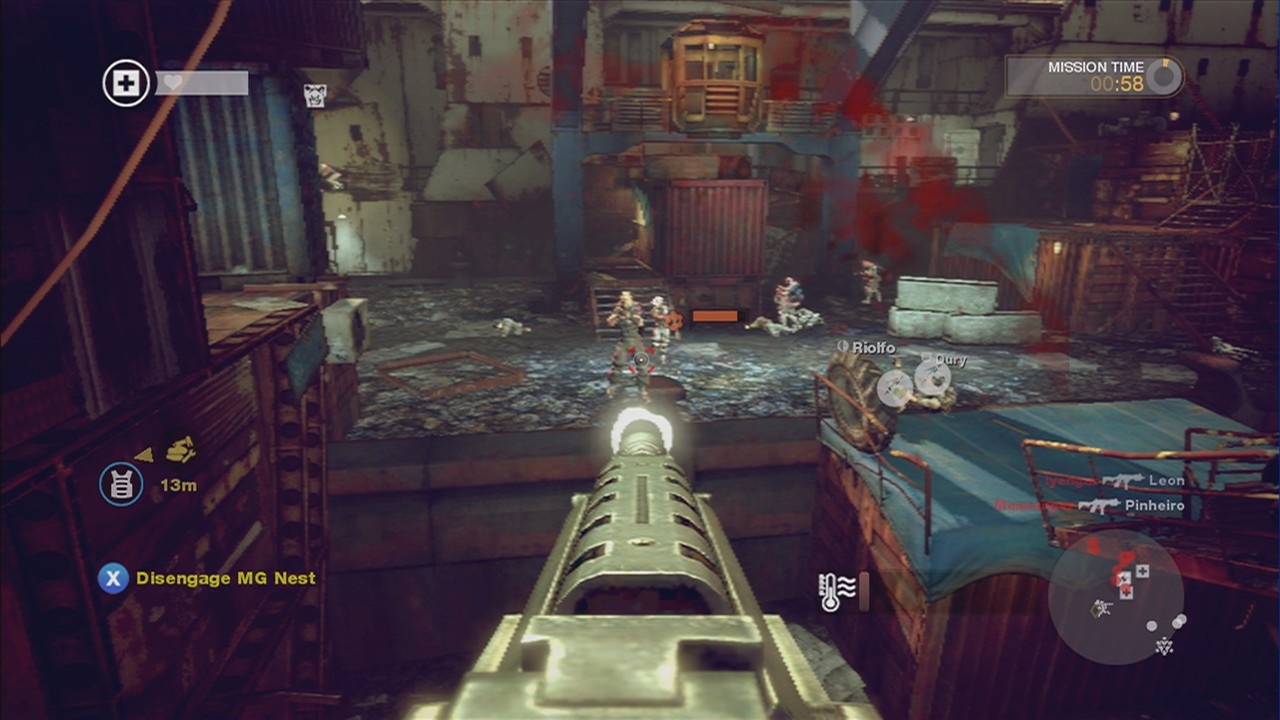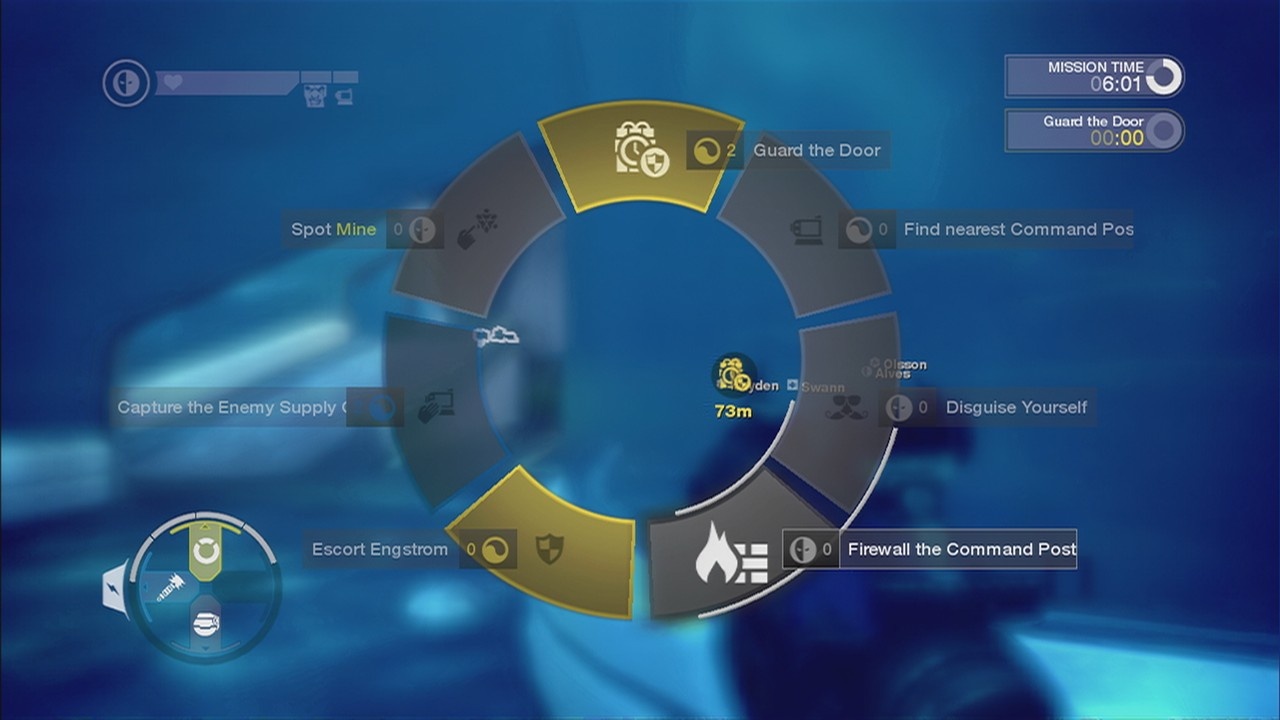Greatness is rarely achieved without ambition. Jumping into the battlefields of Brink, you get the immediate sense that you are playing an ambitious first-person shooter. Four interdependent soldier classes and three distinct body types combine to create a diverse array of ways to kill your enemies, support your allies, and move around the battlefield. Brink's team-based skirmishes are rich with opportunities, but they are also plagued with technical problems and design shortcomings. Visual issues and online lag frequently interrupt the fast-paced flow, and problems with the movement system and the artificial intelligence can be downright frustrating. There is definitely some fun to be had in these frenetic firefights, but for all its ambition, Brink falls well short of greatness.
Your Brink experience starts with a choice. As a citizen of the Ark, will you fight to impose order on the floating city that may be humanity's last refuge in the wake of global disaster? Or do you view the Ark as a prison, where authoritarian forces oppress your people and keep you isolated from the human societies that must still exist on dry land? It's a dramatic choice, but ultimately it's a meaningless one. You can play both sides of the campaign no matter which faction you choose, and your loadout, abilities, and stats are persistent regardless of which side you are fighting for. Brink's online integration means that with the exception of the four Challenge maps, every match you play takes place on one of the eight maps from the campaign. When you start up a match, you can determine what map you play, who can join your game (if anyone), which player ranks are allowed, and whether or not human players are allowed on the enemy team. Setting up a game in freeplay mode enables more customization options and increases the likelihood of joining a game with a lot of human players.
Before you get into a match, however, you have the option to watch extensive tutorial videos that familiarize you with the busy battlefields of Brink. Though they drag on for a while, they are full of good information that can help you get your bearings, especially if you are new to objective-focused, class-based combat. You must also create a character using Brink's stylish customization suite. After choosing from an all-male gallery of quasi-realistic faces, you don either the trim, tough look of the Security forces, or the grimy, ragtag look of the Resistance. You unlock a bunch of cool clothing, hairstyles, and face paint as you level up, and it's fun to play around with your character's look as you progress. (Just don't expect to switch up your tattoos--they're permanent.)
The lone aspect of character creation that actually affects how you play the game is your body type. Every character begins with a medium body and soon unlocks heavy and light types. Heavy characters have the most health and can carry the biggest guns, but they are also the slowest and least nimble. This makes them well suited to defending key areas or clearing out rooms, but you sometimes have to take the long way around to find a staircase. Light characters have the least health and can carry only small guns, but they are also the fastest and most nimble. They excel at running fluidly around the map and leaping to areas other players cannot reach, while peppering the enemy with gunfire. Medium characters are both nimble and durable, though not to the extent of the other types, and they function as a versatile blend of the other two.

Creating diverse types of movement is one of Brink's main ambitions, and to a certain degree, it succeeds. Performing a speedy escape or a daring infiltration with a light character is exhilarating, while mowing down a whole enemy squad as a heavy is very satisfying. All characters can sprint, slide, and jump with varying proficiency, and this mobility helps make combat more lively. Slide into an enemy, and you knock him on his back, resulting in a close-quarters firefight that is a neat hybrid of melee combat and gunplay. Simply holding down the shoulder button while running sends you automatically vaulting over obstacles and clambering up crates, but unfortunately, this movement system is hampered by imperfections. You may take an odd approach angle to a railing and end up running right into it instead of leaping over it. And because there is no clear system to indicate which ledges are surmountable and which aren't, you have to develop a sense of intuition through trial and error. Brink's attempt to infuse the action with this free-running movement is intriguing but problematic, delivering both invigoration and frustration.
Brink's class system is more successful, offering a variety of ways to contribute to the fight. The differences between the classes are fueled by unique abilities that you gain access to as you level up. Soldier abilities focus on doing more damage with grenades and keeping teammates supplied with ammunition. Medics have a bunch of different buffs that make teammates faster and tougher to kill, and they can revive incapacitated allies in the field. Engineers can place mines and automatic turrets in addition to improving their teammates' weapon damage, and operatives can disguise themselves as enemies and scout the battlefield. With 10 or 11 abilities unique to each class, as well as another 10 universal abilities, there is a lot of room for customizing your battlefield presence. Exploring different strategies and expanding your capabilities is addictive and empowering, and it's a thrill to unlock a new ability that gives you a new way to wreak havoc or support the team (like the operative's caltrops grenade or the medic's self-resurrection).
Unfortunately, even these abilities aren't flawless in their execution. Buffs play a crucial battlefield role in Brink, from the soldier's ammo restock to the medic's revival syringe, and administering them requires you to be looking at a nearby teammate. This causes the buff prompt to appear, but you may need to be even closer to perform the buff. Brink's solution is to have you magnetically follow your teammate until you are close enough, but if your target is actively moving, your catch-up motion can become stuttery and disorienting. Sometimes you may not actually start the buff despite having pressed the button when prompted, and when you're trying to revive a teammate, this can make the difference between two active soldiers and two respawning corpses.
When you and your teammates are coordinating your efforts and playing to your class' strengths, skirmishes are dynamic and intense. A handy objective wheel helps you keep track of what needs to be done and what your current class can accomplish, even going so far as to suggest you change classes if needed to fulfill a primary objective. You can do this on the fly at a command post, and though you always have access to a post within your spawn area, capturing command posts out in the wild can grant your team helpful bonuses. Primary and secondary objectives appear on the different maps with varying frequency and with varying success. The best maps have objectives with multiple approaches that offer a number of ways to enter the conflict. Others are encumbered by rigid choke points that can turn a fast and lively match into a brutal slog. Such choke points aren't terribly frequent, but you regularly encounter them because there are only eight maps for competitive play. You quickly become familiar with each locale and the sequence of objectives that each match rigidly follows, which does not bode well for long-term replayability.
Brink thrives when matches are populated by a bunch of human players competing over a smooth connection. Yet even if you have a fast Internet connection, matches are often hamstrung by severe lag that turns them into jerky slide shows. The game usually attempts to migrate the host in this case, but this is not a reliable fix, and you may be forced to quit in order to find a playable match. Matches with only a handful of human players are also problematic, because artificial intelligence is one of Brink's weakest points. Computer-controlled characters behave erratically; sometimes they are ruthless killers, and sometimes they are hapless buffoons. Friendly medics might make a beeline to you, ignoring enemy fire, or they might stand 10 feet away and not bother to revive you. Enemy soldiers might shoot you only a little bit as you successfully complete an objective under their noses, or they might blow your brains out from across the room the minute you step into sight. Online matches often have enough human players to keep the AI's faults at bay, but having such problematic artificial intelligence makes Brink's battlefields much less immersive.

The only other gameplay mode in Brink offers four challenges for you to complete in return for new weapons and attachments to add to your already substantial arsenal. Expanding and tweaking your loadout can be very satisfying, but unfortunately, the same can not always be said for Brink. For every element that creates intriguing dynamics or grants fun powers, there is something flawed in its execution that hampers your fun. And even when everything is going smoothly, ever-present visual flaws make enemies at mid to long distance look blurry, further reinforcing the sense that this is a game in which ambition outpaces execution. Brink doesn't make it easy to have a satisfying experience, and though the action can be engaging, you have to weather significant problems to get your money's worth.
If you're already playing Brink, be sure to check out our game guide, which includes details on classes and abilities, as well as tips for completing challenges.